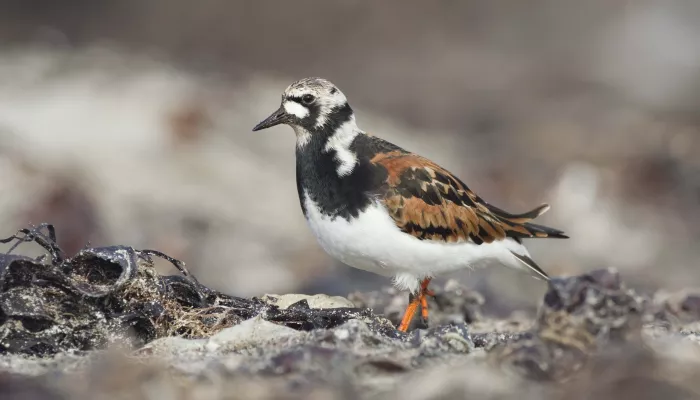| Statistics | |
|---|---|
| Length: | 21cm - 24cm |
| Wingspan: | 54cm |
| Weight: | 120g |
| Average Lifespan: | 9 years |
The turnstone can be spotted fluttering around large stones on rocky and gravelly shores, flipping them over to look for prey. It can even lift rocks as big as its own body! Although a migrant to the UK, it can be seen all year-round as different populations arrive throughout the seasons.
About
Turnstones are medium-sized sandpipers of rocky shores and gravel beaches. Although they don't breed here, they can be seen throughout the year as birds from northern Europe pass through in summer and again in spring, and birds from Canada and Greenland arrive in early autumn and leave in early summer. Turnstones - so-named for their habit of flipping over large stones - feed on a wide variety of prey from bird's eggs to chips and even corpses! They can be spotted creeping and fluttering about the rocks, looking for food underneath them.
How to identify
In winter, the turnstone is dark brown above, with a black pattern on the face and breast, a white chin and white belly. During summer, adults have a colourful, chestnut- and black-chequered pattern on the back. When they fly, turnstones show a white patch on the back, broad, white wingbars, and white patches at the base of the tail.
Did you know?
Known in North America as the 'ruddy turnstone', there is also a second species, the 'black turnstone', which lives on the Pacific coast of North America.

